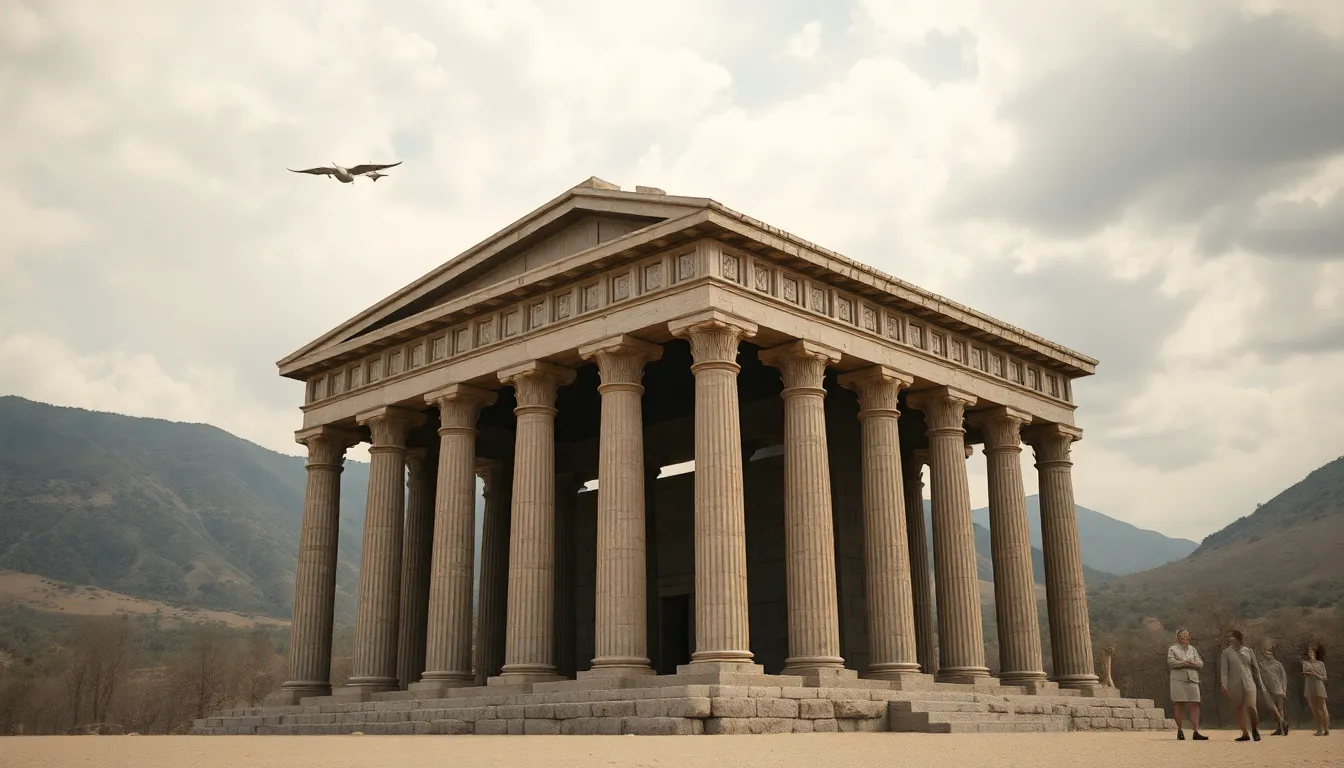The Role of the Chorus in Ancient Greek Festivals: A Collective Voice
I. Introduction
The ancient Greek festivals were vibrant celebrations that played a crucial role in the cultural and religious life of the city-states. These festivals were not only religious observances but also grand communal gatherings showcasing art, music, and dramatic performances. One of the most significant components of these performances was the chorus, which served as a bridge between the audience and the narrative, enriching the theatrical experience.
The significance of the chorus in Greek culture extends beyond mere entertainment; it reflects the societal values, beliefs, and collective identity of the people. This article aims to explore the role of the chorus in ancient Greek festivals, examining its historical context, functions, and lasting impact on modern performances.
II. Historical Context of Greek Festivals
Ancient Greek festivals were integral to the social and religious fabric of Greek life. Major festivals included:
- Dionysia: A festival held in honor of Dionysus, the god of wine and fertility, featuring dramatic competitions.
- Panhellenic Games: Athletic competitions held in Olympia, which included the Olympic Games, celebrating physical prowess and unity among the Greek city-states.
- Thesmophoria: A festival dedicated to Demeter and Persephone, celebrating fertility and the harvest.
These festivals were characterized by theatrical performances that evolved over time, growing from simple hymns and dances into complex dramatic presentations that included dialogue, music, and elaborate staging. The chorus emerged as a fundamental element of these performances, providing a collective voice that articulated the themes of the plays.
III. The Chorus: Definition and Composition
In ancient Greek theater, the chorus was a group of performers who sang, danced, and delivered commentary on the action of the play. Typically consisting of 12 to 15 members, the chorus was composed of male citizens, often representing various societal roles, such as elders, warriors, or townsfolk.
The roles within the chorus included:
- Leader: The individual who guided the chorus and often engaged in dialogue with the actors.
- Choral Members: Performers who sang and danced in unison, contributing to the overall aesthetic and emotional impact of the performance.
The relationship between chorus members and the audience was vital; the chorus served as a mediator, providing insight and commentary that enhanced the audience’s understanding of the narrative.
IV. Functions of the Chorus in Performances
The chorus fulfilled several critical functions in theatrical performances:
- Narrative Functions: The chorus helped bridge gaps in the story, offering background information and summarizing key events. This allowed the audience to follow the progression of the narrative more seamlessly.
- Emotional Functions: Through their songs and movements, the chorus conveyed the themes and moods of the play, evoking emotions such as joy, sorrow, or tension. Their performances often mirrored the emotional states of the characters, enriching the dramatic experience.
- Moral Functions: The chorus provided commentary on the moral implications of the actions taking place in the play. They often reflected societal values and prompted the audience to consider ethical dilemmas.
V. The Chorus as a Collective Voice
The chorus represented a collective identity, embodying the shared experiences and values of the community. This concept of collective identity was significant as it allowed the chorus to:
- Express Societal Values: The chorus often articulated the beliefs and norms of the society, reinforcing communal ideals.
- Provide a Vehicle for Communal Expression: Through their performances, the chorus served as a platform for communal feelings and reactions, allowing the audience to engage with the narrative on a collective level.
VI. The Chorus and the Audience
Interaction between the chorus and the audience was a defining characteristic of Greek theater. The chorus engaged the audience in various ways:
- Direct Address: The chorus would often speak directly to the audience, breaking the fourth wall and creating a dialogue that enhanced engagement.
- Shaping Audience Perception: By providing commentary and emotional cues, the chorus influenced how the audience interpreted the actions of the characters on stage.
- Engagement Techniques: The use of song, dance, and rhythmic movements were all techniques employed by the chorus to captivate the audience’s attention and evoke emotional responses.
VII. Legacy of the Chorus in Modern Performances
The influence of the chorus extends beyond ancient Greek theater and can be seen in contemporary theater and performance art. Modern adaptations of the chorus include:
- Musicals and Opera: The use of ensemble casts that perform songs and dances, similar to the function of the chorus in ancient dramas.
- Choral Works: Modern choral groups often echo the collective voice of the ancient chorus, conveying themes and emotions through vocal harmony.
- Thematic Adaptations: Contemporary narratives often incorporate the concept of a chorus to reflect societal issues and collective experiences.
The relevance of the chorus concept in today’s artistic expressions continues to resonate, highlighting the importance of collective voices in storytelling and culture.
VIII. Conclusion
In summary, the chorus played a vital role in ancient Greek festivals, serving as a collective voice that enhanced the theatrical experience and reflected societal values. Its functions as a narrative, emotional, and moral guide enriched the performances and engaged the audience in profound ways. The enduring impact of the chorus in theater and culture underscores the importance of collective voices in society, reminding us of the power of shared experiences and communal expression in the arts.
As we reflect on the legacy of the chorus, we recognize its lasting significance in shaping artistic narratives and fostering a sense of community through performance.




